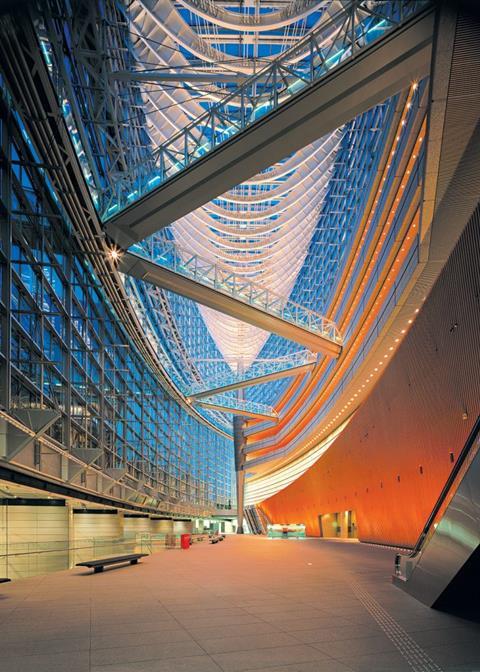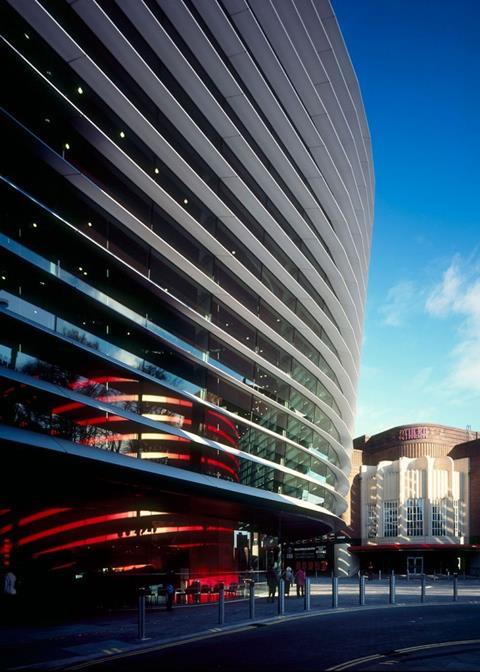RIBA president salutes “impressive and generous” architect who influenced global thinking
Norman Foster has described Rafael Viñoly as an “outstanding” and principled architect following his death at the age of 78.
RIBA president Simon Allford said Viñoly had helped to influence thinking about architecture and infrastructure across the world – including on the redevelopment of Battersea Power Station in south London.
Foster said he had become friends with Viñoly after a visit to Japan in which the Uruguayan architect’s Tokyo International Forum conference and arts centre, which completed in the mid-1990s, had a profound effect. The centre includes a 60m high, 228m long glass hall.
“I was so taken aback by its soaring, light-filled space and filigree structure that I tracked down the architect and wrote a letter of congratulations to him,” Foster said, after news of Viñoly’s death from a suspected aneurysm emerged.

“That was the start of a friendship based, not just on his outstanding architecture, but on the pleasure of his company. Rafael was energetic, elegant, passionate, articulate and witty. He also had an ethical conscience on the wider implications of architecture.”
Foster said one example of Viñoly’s moral compass at work was his decision to quit the jury of a Russian design competition that he felt would result in damage to the St Petersburg Unesco World Heritage Site.
“We were both members of a jury for a project on the outskirts of St Petersburg, when it seemed to us that there was an inexorable move to select a tall tower that would impact the skyline of the historic city,” Foster said. “We were both of one voice and, together, we resigned from the jury.
Foster added: “Rafael Vinoly will be dearly missed, not only by his family and the profession, but by the many, like myself, who were privileged to share his friendship.”
RIBA president Allford said Viñoly was an “impressive and generous architect” who left behind an international body of work that “helped inform thinking about architecture and infrastructure across the globe”.
“Across four decades of practice, he designed and built major projects that have left a vital mark of his talent and energy,” Allford said.
“My memories of him are many. At the Battersea Power Station design reviews he was thoughtful, reflective, engaged, and responsive, possessing a commitment to and an ever-watchful eye on the importance of the bigger idea.”
The RIBA president said his abiding recollection was of “a highly skilled, amusing yet serious presenter” of architectural and urban scaled ideas.
“His tools were his sharp intellect allied to his portfolio of remarkable projects, sketches, models and the multiple sets of spectacles he sported as a light-hearted professorial prop,” Allford said.
“My heartfelt condolences go out to his wife Diana, his family and loved ones, and all of those who have found inspiration in his work.”
And Make Architects founder Ken Shuttleworth said Viñoly had an “infectious” zeal for architecture.
“He was truly passionate about his work, and on the few opportunities I had to meet with him, he was enormously optimistic and fun,” Shuttleworth said.
“He was a larger than life character in our architecture world and I really think his sense of the possible will be missed.”
Dennis Austin worked with Viñoly from 1990 to 1994, and subsequently went on to work for RSHP before co-founding the London-based daab design practice in 2014.

He said the architect had provided a “unique environment” in which young architects were able to gain invaluable experience.
“He led by doing and drew the best from the people around him,” Austin said. “He showed me that an articulated voice was as important as a captivating drawing.
“He was demanding in a way that reflected his passion for art, architecture and music and he showed us that our voices within the built environment were important.
“He mastered various mediums; watercolour, graphic, charcoal, pen and ink, but perhaps as important, he mastered the importance of human relationships.”
Ricky Burdett, professor of urban studies at the London School of Economics, also paid tribute to Viñoly.
Burdett, who was architectural adviser to the Mayor of London from 2001 to 2006 and chief adviser on architecture and urbanism for the London 2012 Olympics, said Viñoly was “a unique individual with a rare architectural and urban sensitivity”.
He added that Viñoly was also “curious, creative, informed, dynamic and funny”.




























No comments yet